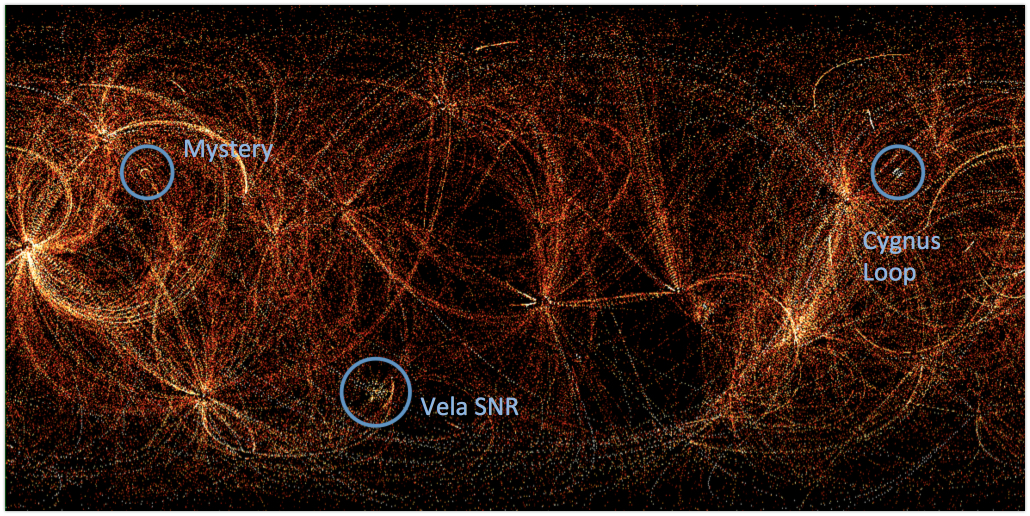
 Credit: NICER team; NASA
Credit: NICER team; NASA
A NICER View of the Whole Sky
The Neutron star Interior Composition ExploreR, or NICER as it's more commonly known, is an X-ray telescope
mounted on one of the science platforms on the International
Space Station. NICER's primary science goal is to obtain precise
measurements of the regular pulses of X-ray emission produced by some rapidly
spinning neutron stars (also known as X-ray
pulsars). Neutron stars are the most dense non-singular
objects known, but we don't know exactly how dense, or how matter behaves at
such high densities. But a neutron star's high density produces an extremely strong gravitational field which
warps the surrounding spacetime, producing subtle changes in the flashes of X-rays
these strange objects emit. NICER can measure the subtle variations in the rise and
fall of the X-ray pulses produced as the neutron star spins, which determines the amount of spacetime warping and
thus the density of the neutron star. In addition to studying neutron stars,
NICER also studies X-ray emission from black holes, stars, galaxies, and other denizens of the cosmos, and can
rapidly move from target to target if a new object flares up. NICER
even detects X-rays when the telescope is moving from one target to another.
The image above is a map of the entire sky in X-rays created from NICER data obtained in its journey from target to target. Each curve in the image tracks the cosmic X-ray emission seen by NICER as NICER moves its pointing direction from one place the sky to another. Two known sources, the Vela supernova remnant and
the "Cygnus Loop" are marked, along with an interesting, as
yet unidentified, mystery source. As time goes on, NICER will detect X-ray
emission from more and more regions of the sky, filling in the gaps and painting a fuller picture of cosmic X-ray
emission. Watch NICER watch the sky
in real time to see how it does this.
Published: March 26, 2018
<
HEA Dictionary ● Archive
● Search HEAPOW
● Other Languages
● HEAPOW on Facebook
● Download all Images
● Education ● HEAD
>

Each week the HEASARC
brings you new, exciting and beautiful images from X-ray and Gamma ray
astronomy. Check back each week and be sure to check out the HEAPOW archive!
Page Author: Dr. Michael F. Corcoran
Last modified Monday, 26-Feb-2024 17:35:53 EST


